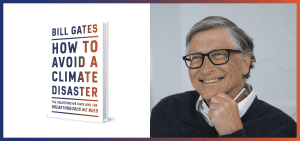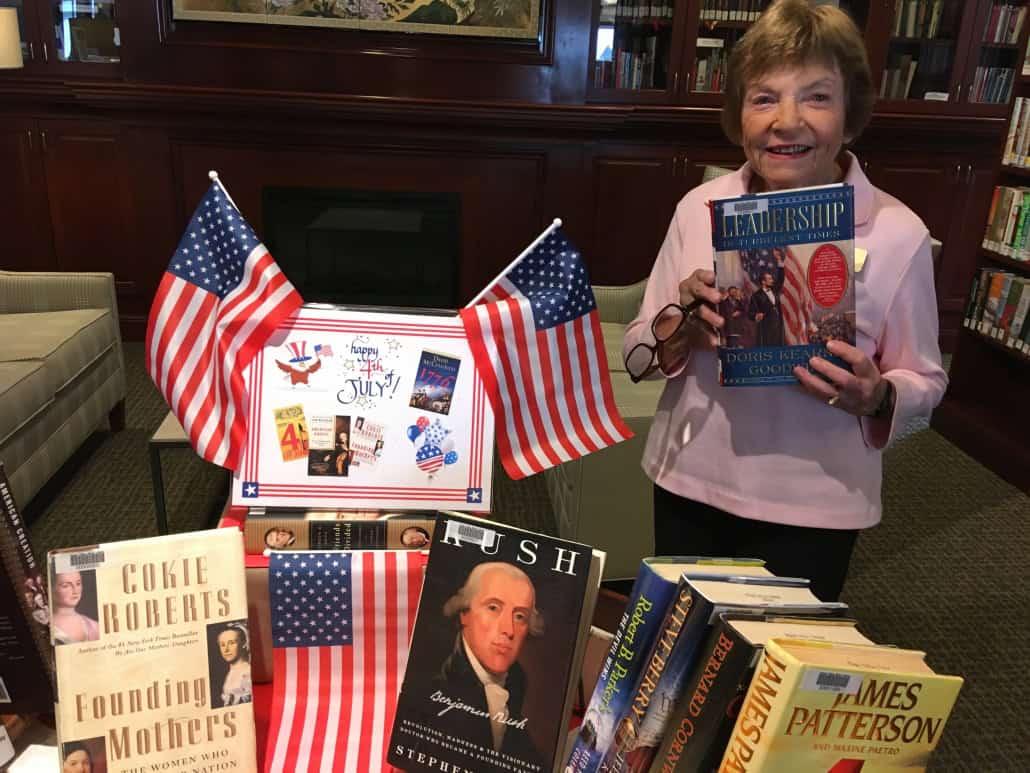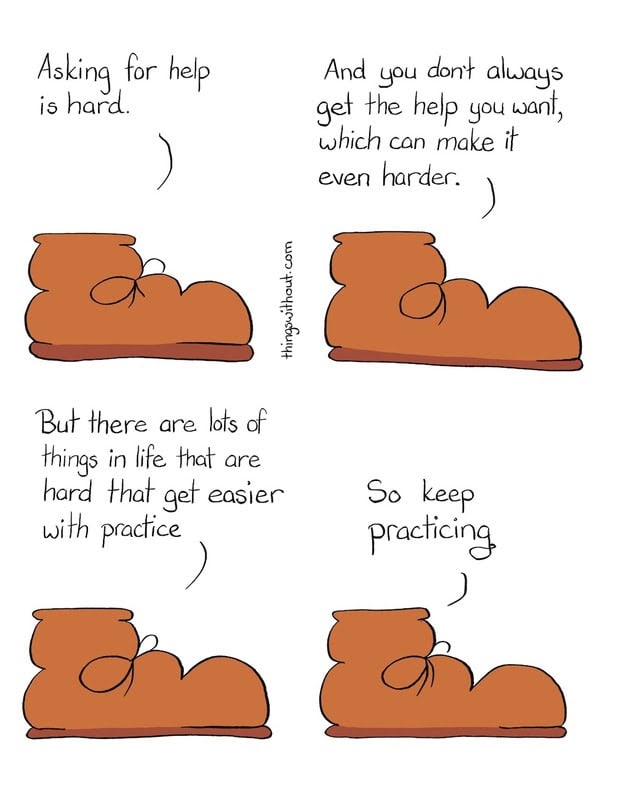August Library Display


This is a repository for information from or about RPG that is particularly intended for coordinators, but may be of use or interest to other residents. The material is subject to change, but well enough developed to merit presentation. All of the items are open to comments or questions — email rpgrvm@gmail.com.
Coordinator qualifications —
— a reviewed draft of what a volunteer coordinator should be able and willing to do
Coordinator Back-ups —
— Making sure emergency functions are carried out if the primary coordinator is not available
Safety vests and contents
— Why coordinators have safety vests, and suggestions about what to carry in or with them
Coordinator Qualifications: Floor and Neighborhood Coordinators (Draft 9/08/21 RWB)
Effective functioning as a coordinator requires certain capabilities and actions:
Ability to walk at least three round trips of the area of responsibility (floor or neighborhood), in prompt succession at a brisk pace, with brief stops at every residence.
Ability to record, remember, and repeatedly transmit clearly, various kinds of procedures and multi-step instructions.
Ability to hear and communicate with telephones.
Ability to learn the use of a hand-held radio for communication within the Area or Building [training provided]
Possession of a TV capable of displaying Channel 900/901
Possession of and access to an email account and a computer, tablet or phone with which to use it.
Willingness/ability to communicate effectively with residents, and to compile basic information.
Highly desirable but not necessarily essential:
Possession and use of a Smart Phone.
Willingness and ability to participate in recruiting and working with a back-up or assistant coordinator.
NOTE: Area and Building Coordinator qualification specifications are in development
THE RPG BACKUP ISSUE — Draft, RWB 08/09/21
1.1 Terrace Radio Room (TRR);
1.2 Building and Area Coordinators (BC & AC);
1.3 Floor and Neighborhood Coordinators (FC & NC).
Other positions may be added as the organization develops, but for now that’s it. Most important are positions critical to communication. We recognize that every location will be unique to some degree and that creative approaches by the coordinators will be needed.
The TRR is really a separate and unique issue in terms of qualifications; let’s set that aside.
2.1 Backups should be geographically close to the position they are backing up.
2.2 We currently do not have the resources to equip a full complement of backups (radios, maybe vests)
2.3 Recruiting experience has shown that there is little hope of finding a second person for every coordinator position.
A Possible Approach (top down):
Concentrate on recruiting backup BCs and ACs –
People in these positions will/should be able to carry out the duties of F/NCs, so if both the primary and backup B/ACs are present, the backup can also serve to back up the F/NCs.
We probably can afford to equip one additional person for each of the B/AC positions.
One possibility is recruitment of one of the F/NCs as backup B/AC – they’re already committed and partially trained, and if the backup process occurs, filling in for a missing F/NC is less critical (see discussion below).
Compensatory mechanisms (bottom up):
For the problem of missing F/NCs – the first step is making use of existing resources by cross-training and cross-assignment. Each coordinator should have the information necessary to take over an adjacent neighborhood or hallway after doing his/her primary assignment.
Existing dual assignments provide some additional scope for spreading the load, although both members of husband-wife teams may be gone at the same time.
Addition of other individual backups is still possible even if cross-assignment is used.
Backup Transition Preparation and Management:
There will be both planned and unplanned coordinator absences
— planned is going on vacation, hands over radio, vest and information list
–unplanned is downtown, in the pool, in bed with the flu
Backups need to know the procedures (local information, radio training, exercises) in either case.
Implication – all backups should be on the same notification list as the primary person
B/AC could contact a backup by phone (important to have cell!), or might be issued a spare radio, vest, etc. for unplanned absences when a substitute is available
If primary and backup are personally close, they might be able to arrange a mutually accessible storage location for gear (e.g., garage or golfcart garage, sharing keypad combination).
RPG Coordinator Safety Vest Information, 9/07/21
This accompanies the safety vest you have been issued, and offers some information and suggestions.
Supplied:
Strongly suggested:
Suggested:
The First-aid question: Coordinators are NOT required or expected to render medical assistance. However, for those who wish to be prepared, the following self-assembled kit is suggested.
Blunt tipped scissors & tweezers, Nitril gloves, masks, Disinfecting wipes, Large (i.e. knee) bandaids – waterproof or “tough”, Non-stick wrap – Coban or softer, gauze type wrap, Cloth medical tape, riangular bandage, 5” x 9” (ABD) pads -as many as possible, QuikClot Advance Clotting Gauze, Aspirin packs.
Other Considerations: seasonal items such as sunscreen or handwarmers; water bottle with a belt clip.
Last May, resident Sally Densmore also submitted a review about “How to Avoid a Climate Disaster,” which she encouraged others to read. We feel that the following review neither negates nor duplicates Sally’s, which was written on a more personal basis. Taken together, they supplement — or we should probably say, complement — each other in focusing attention on a critically important topic. Indeed, others have been appreciating the book as well as the other books referenced at the end of this article, and we hope that multiple reviews in the Complement will inspire yet more people to engage with the issues.


Leslie Schettler
Reviewed by Leslie Schettler and Anne Newins.

Anne Newins
Legendary Speaker of the House Tip O’Neill was famous for saying “all politics is local.” Bill Gates, one of the world’s wealthiest men and mega-philanthropist, understands that in the case of addressing climate change, all politics must necessarily be global, along with corporate innovation and investment, research and development.
How to Avoid a Climate Disaster by Bill Gates (Alfred Knopf 1921) is an optimistic book, but Gates acknowledges that the necessary steps will be complicated, hard and expensive. This short volume is intended for the readers who may not have a strong science background.
Gates says there are two numbers one needs to know about climate change. One is 51 billion and the other is zero. 51 billion is the number of tons of greenhouse gases the world typically adds to the atmosphere every year. Zero is what we need to aim for, in order to stop the warming and avoid the worst effects of climate change.
There are five “takeaways”:
Gates follows these discussions with a chapter on the importance of government policies, a plan for getting to zero, and a summary of what each of us can do.
At the end he shares a quote from Hans Rosling, author of Factfulness (also available in the RVM library), “When we have a fact-based worldview, we can see that the world is not as bad as it seems—and we can see what we have to do to keep making it better.”
Reviews of the book have been generally positive. In a New York Times review, Bill McKibben, author of the highly regarded Falter, credits Gates with addressing the issue and his numerous philanthropic investments. At other times, McKibben is more critical.
Gordon Brown, in a review in The Guardian says that “Gates’s most important proposals involve new technologies,” and that he “is right about the scale and urgency of the problem.”
Besides Gates’ and McKibben’s books, several other related books might interest residents and also are available in the Manor library. The Gates book is also available in large print. Other books include Drawdown by Paul Hawken, and Merchants of Doubt by Naomi Oreskes and Erik M. Conway. Beloved naturalist David Attenborough has recently published A Life on Our Planet, and a copy will be made available in the library by late July.

Library Volunteer Judy Simpson looks over this month’s display.
Visit the Library’s July book display which focuses on the Founding of the Country and its founding fathers, founding mothers, and founding brothers with books by Pulitizer Prize winning authors and New York Times best selling authors. Here are some examples.
“Thomas Jefferson and the Tripoli Pirates” (an audio book), tells of pirates boarding the new country’s ships and kidnapping American sailors for slaves and ransom. Jefferson sent the U.S. Navy’s new warships and the Marines to Tripoli, beginning America’s journey toward super power status.
“Founding Mothers” by New York Times bestseller Cokie Roberts provides an intimate look at women behind the scenes such as Abigail Adams, Deborah Read Franklin, and Martha Washington. Social history at its best, proving that without our exemplary women, the new country might never have survived.
“Benjamin Rush” by New York Times bestseller Stephen Fried, describes one of the youngest signatories, an M.D. called the Father of American Psychiatry, who revolutionized treatment of mental illness and addiction,
There are fiction, non-fiction, large print, and audio books. Come and enjoy some of our nation’s early history.
Congratulations on taking those first steps into a new volunteer activity — and WELCOME!
The Birthday Luncheon Committee has two new members — submitted by Jamie Harris.
Meridel Hedges steps into the position held by Jamie Harris for 14 years. Meridel and her husband, Dan, moved to RVM from Eagle Point in 2019. She attended one Birthday Luncheon just before the shutdown, enjoyed it enough that she thought it would be a good committee to join. Meridel has been involved in several volunteer committees in the past and will be a wonderful new addition.
Faye Isaak steps into the position held by Sharon Purkerson for 10 years. Faye, along with her husband, Merl, moved to RVM in 2005. Faye has been an active member of the community and is well known as the author of the Rogue Valley Manor history book, “Vision with a View”, She is also appreciated for her artistic talents, and poetry. We look forward to having her on the BD committee.
Meridel and Faye join Patti Robb, who very recently also joined the Birthday Luncheon Committee
by Bob Buddemeier
![]() Did you ever stop to wonder about the on-line journal that you’re reading? If not, it may be time to switch to a different article, but if so, read on.
Did you ever stop to wonder about the on-line journal that you’re reading? If not, it may be time to switch to a different article, but if so, read on.
The Complement was built by David Gordon of Ashland Websites, who continues to coach us and troubleshoot as needed. No, he doesn’t work for free, but it turns out that this is a remarkably cheap hobby compared to many.
Under the hood, it is powered by WordPress software running on the Bluehost site. That’s a giant ho-hum for most people, but it’s worth mentioning because those pieces of software account for a remarkably large percentage of the cottage-industry blogs and websites around the world.
The dedicated editorial team consists of Joni Johnson, Connie Kent, Tom Conger, Reina Lopez (photographer), and yours truly. That is far from all, however. We offer frequent contributions from Nit-Wit Newz correspondent A. Looney, Russy Sumariwalla, and our outstanding panel of book reviewers (Anne Newins, Bonnie Tollefson, Jan Hines, Liz Caldwell, Connie Kent, Sally Densmore, and Leslie Schettler). We’ve also had contributions — both written and pictorial — by and about many RVM residents.
What can we do? Well, we can post pictures, videos, downloadable PDFs (and other formats), and plain old click-and-read articles. The zippy thing is that we can do it fast and easily — from a final draft in Word to an on-line article can be a matter of minutes — which means we get to concentrate on the fun and exciting parts of journalism instead of bogging down in process and procedure. As far as we can tell, our readers appreciate that as much as we do.
And how much do those readers read? The figure below shows monthly views — the total number of articles (posts) that get clicked (whether or not they actually get read). Over 3,000 — not bad, we think. How many actual human beings does that represent? A visit is one person coming to the site (no matter how many posts s/he views). We get 300-ish in the first few days after an issue comes out, and if we announce a mid-month feature or even just put out a reminder, we get another pulse about half as big. The trouble is, we have no way of knowing how many visits are due to a few insatiable people coming back again and again. We think around 300 is a conservative estimate of individual viewers.

What can’t we do? We can’t provide for the non-computer (or non-internet) users. We’ve looked at it, and it is just too costly — in time and effort as much as in dollars. Actually, let’s be honest. We won’t do that, because we aren’t interested in replacing our writing and thinking and editing time with formatting and copying and distribution. Sorry.
Another thing we can’t do is get to the computer-users who do not look at RVMlist — at least not without going to hit-everybody email blasts, which is really pretty obnoxious. We do offer a “subscription list” to anyone who wants to get a personal email when the RVMlist notice goes out — just give one of us your email, or send a request to openinforvm@gmail.com.
And finally, we can’t (or again, won’t) connect to myRVM, because the conditions for doing that aren’t consistent with our view of how an independent publication should operate.
Let’s take a look at expectations and actuality. We set up the structure with three main subdivisions — Arts & Info, News & Views, and Prepare.
Arts & Info was envisioned as the place for resident products — we started out with some poems by RVM poets past and present, and haven’t done that again largely because we’ve had enough other items (we figure 3-4 major ones plus some shorter notes or links for N&V and A&I — fewer for Prepare). We try to have at least one visual feature, and something on the lighter side each month, at least one book review and the library display, the program schedule, and whatever else comes along. We could run more some months, but we have actually had people tell us that we put out so much they have trouble getting around to reading it all.
New and Views = facts and opinions; in fact, quite a few of our resident-authored products end up here rather than in A&I because of their focus on a current issue (for example, Asifa Kanji’s “I am Not a Racist, They are“). We also have how-tos (grocery delivery), general community descriptions (solstice religious holidays), and resident concerns (what happens on hospital discharge). There are a few glimpses of the outside world — links to the Seattle and Portland Mirabella newsletters, which are very different products providing a look at other PRS facilities. We also offer links to and reprints of other items of interest; in this issue we reprint an article from the Seattle Mirabella Monthly on one of their residents who contributed to the translation of the Bible into Hawai’ian Pidgin.
Prepare was — and is — envisioned as a repository of accessible and RVM-relevant information on preparedness for emergencies and disasters. A lot of material has been accumulated there, but we have been marking time during the pandemic because we can’t refine resident plans or instructions until we have a clear picture of RVM emergency plans. Fortunately, the RVM planning process is within a very few months of being complete, and we expect to be making major updates to the information on the Prepare page. In the meantime, we have been focusing on Wildfire Season issues, which deserve everyone’s attention.
It seems to be going pretty well, but we would like to get more public feedback — there have only been 44 comments posted. Some have been substantive, like Doyne Mraaz’s comment on Russy Sumariwalla’s reprinted article, but the overall public number is few. We get far more personally — for example, only two of the 15 remarks in Life’s End Comments were posted publicly; the rest are anonymized personal communications.
Now — the latest — what about VIEWPOINTS? We wish we could tell you. We launched it with the conviction that there was another level of candor and debate needed beyond what we were providing with The Complement. We also launched it with a lot of internal debate and soul-searching and concern about how to to link it to or detach it from The Complement so as to maintain separate personalities. Well, silly us. We published a suite of articles on perceived failings in PRS/RVM management vis-a-vis the residents, and another article on one of the most problematic loci of ethnic and geopolitical strife, and guess what? The crowds with torches and pitchforks completely failed to materialize. We suspect that this does not mean that RVM is one giant nest of harmony and agreement, but rather that the residents have rather quickly self-selected into readers or non-readers.
providing with The Complement. We also launched it with a lot of internal debate and soul-searching and concern about how to to link it to or detach it from The Complement so as to maintain separate personalities. Well, silly us. We published a suite of articles on perceived failings in PRS/RVM management vis-a-vis the residents, and another article on one of the most problematic loci of ethnic and geopolitical strife, and guess what? The crowds with torches and pitchforks completely failed to materialize. We suspect that this does not mean that RVM is one giant nest of harmony and agreement, but rather that the residents have rather quickly self-selected into readers or non-readers.
It’s nice to be appreciated, but talking only to those who agree with you does not provide much of a feeling of advancing the total of human understanding. Since we didn’t make a specific schedule commitment for VIEWPOINTS, we’ll let it go fallow for a little while and see if something or somebody turns up. It could be you — think about it.
Do you want to get a personal email notification of a new Complement issue or new material? Email us at openinforvm@gmail.com and we will put you on the mailing list
Past articles are all on display; If there is a “Load More” link at the bottom of the page, clicking it will bring up the older articles.
Haappy Biirthdaay to us!, from the Staff
– The Complement is one year old!
The New Friendship Table, by Fred Sommer
– Getting to know you…
Everything You Want to Know about Secret, by Joni Johnson
– Wonderdog! — profusely illustrated
We Are All First Responders by Bob Buddemeier
– Community counts
This Too Could be You!, by Joni Johnson
– Getting to know you even better…
3550: the Portland Mirabella quarterly magazine (most recent issue)
Mirabella Monthly, Newsletter of the Seattle Mirabella (Current issue)
Some South American Crafts, by Reina Lopez, ed. Connie Kent
– Beautiful and distinctive jewelry and fabrics
RVM September – October Event & Entertainment Schedule
September Library Display, by Anne Newins; poster by Jan Hines
Aging and Dying Your Way, by Anne Newins
– Library display details and a featured book
RVM DVDs on Aging and Dying, by Dave Guzetta
– A companion to the Library display
RVM Play Reading Group, text by Tina Vasavada, photos by Reina Lopez
– Thespians without costumes
The entire Prepare page is being revised and updated — check back frequently
RVM Campus Evacuation Guidelines for Fire, by Bob Buddemeier, based on RVM information
– with updated RPG directory and maps
Comic art by Liz Argall: thingswithout.com

“A Special Book” is reprinted with permission from the June 2021 issue of the Mirabella Monthly, newsletter of the Seattle Mirabella community. We are grateful to the author and to the editor, Jared Curtis, for allowing us to share this special article with the RVM community.
A Special Book, by Sally Hayman
Janet Ohta sat in The Bistro sipping coffee with the product of a nearly thirty-year project on the table beside her—two books with bright blue images of the Hawaiian Islands on the covers. They are Da Jesus Book and Da Good An Spesho Book, translations of the New Testament and the entire Bible into Hawaii Pidgin.

Janet Ohta, a member of the translating team. Photo by Jared Curtis
Janet speaks Hawaii Pidgin even more easily than she does English. She was born in Hawaii of Japanese parents. Her mother and father had emigrated to Hawaii in search of a better life and a good place to raise their eight children. Japanese was spoken at home, but not encouraged in public for fear of being mistaken for Japanese spies during World War II. So, when Janet started first grade, she spoke Japanese and Pidgin English. Her wonderful first grade teacher spoke both languages and helped Janet to become more fluent in Standard English.
Hawaii Pidgin is not a dialect, but a Creole language developed when workers from China, Japan, Korea, the Philippines, and Portugal came together in camps to work under English- and Hawaiian speaking bosses on pineapple or sugar cane plantations. Pidgin is orally transmitted and cannot be learned from reading English books or from English classes. Today there are still large groups in Hawaii that speak mainly Pidgin, but only a little English. The language is a bit different from place to place.
Though Janet’s parents were Buddhists and even dedicated a Buddhist temple in Hawaii, her father decided that the chanting was not meaningful to his children. So, he took them to the Kahului Union Church, founded by American Congregational missionaries, and Hiroko (Janet’s Japanese name) and her seven brothers and sisters became Christians. Janet fell in love with the Biblical stories.
Then Janet met Drs. Joseph and Barbara Grimes, both former professors of linguistics at Cornell University and associated with the Wycliffe Bible Translators, a non-denominational, non-profit group. The couple had retired to the west side of Oahu where mainly Pidgin is spoken. Embedded in a community of native Hawaii Pidgin speakers, the Grimeses worked with the Greek and Hebrew Bibles and countless other translations to ensure that every word in the Hawaii Pidgin Bibles was true to the intent of the text and to find meanings best suited for Hawaii Pidgin. They enlisted a group of twenty-nine people, including Janet, who helped with the translation through the years 1987 to 2020. In Hawaii Pidgin the Old Testament is referred to as “Da Befo Jesus Book” and the New is referred to as “Da Jesus Book.” Da Jesus Book was published in 2000, followed by Da Good An Spesho Book, comprised of Old and New Testaments, in 2020.
Janet and her husband Jim are members of Kalihi Union Church on Oahu, part of the Evangelical Free Church of America. They divide their time among three children and five grandchildren. Here at Mirabella, she and Jim continue Bible study in a group led by Phil Braden and Darrell Guder.
A sample of a few passages in the book will amaze you with the vitality of the language. When the Angel Gabriel comes to Mary he says, “Aloha! Da One in Charge goin do something spesho for you.” Or Song (Psalm) 23: “Da One in Charge, he take kea me, / Jalike da sheep guy / Take kea his sheeps. / Az why I get eryting I need.” Every new language brings new insights.
You can get a copy of Da Good An Spesho Book at Costco or Walmart in Hawaii. It might be more interesting than a can of macadamia nuts to bring back as a flavor of Hawaii. And for many Hawaiians the book opens a whole new world.